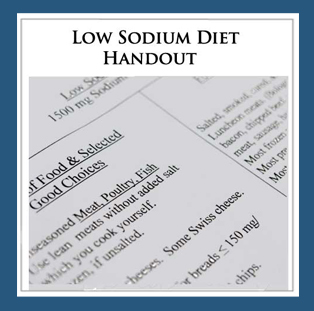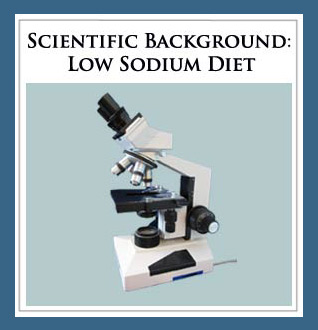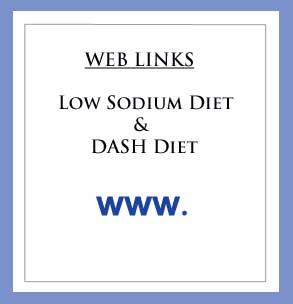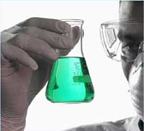Low Sodium Diet
A low sodium diet is important to achieve good blood pressure control for patients with high blood pressure. A low sodium diet can also be useful for certain patients with kidney disease or liver disease, particularly those with too much fluid on the body.
A low sodium diet is important for individuals with hypertension because lowering salt intake directly results in lower blood pressure.
Second, taking in less salt makes the body more responsive to the blood pressure medications that may be required. Most patients with high blood pressure still require blood pressure medicines in addition to diet, but they often need fewer medications or lower dosages than otherwise would be the case, and that is a good thing.
Ideally, each patient should have detailed individual instruction with a dietician and that is recommended to you. However, as a cardiologist, I have seen hundreds of patients who were referred to me because their blood pressure was difficult to control, who would benefit from instruction in a low sodium diet. This video is to make more information available about a low salt diet because this is one of the key elements in ultimately achieving good blood pressure control.
Now, first the good news and the bad news about sodium restriction.
The bad news is that food tastes very bland for the first 6-8 weeks of limiting your salt intake. Many people during this period think that their food does not taste quite right. They have been accustomed to a high salt diet for years.
The good news though, is that by 8 weeks, food will taste just fine. Your taste buds adjust and become more sensitive to salt.
You won’t believe this 2 weeks into a low salt diet, but by 8 weeks you will have experienced this change. In fact, some foods that tasted just fine beforehand, will now taste too salty. Some additional good news is that if you have a tendency for swelling in your legs or hands from the type of swelling that pits or leaves indentations when you press on it, a low sodium diet will be helpful.
Water on the body in the form of swelling is salt water and restricting salt helps decrease this type of swelling. Beneficial effects usually begin to be apparent within 1-2 days when they occur. But, you need to visit to your physician in this situation, even if a low salt diet is helpful, to make sure that a significant underlying medical condition needing treatment is not the cause. How much excess salt does the average American eat? Most North Americans eat a diet with at least 3-4 times more salt or sodium than is ideal.
And you may think that, well, it’s the salt shaker. But less than one fifth of the sodium in the average diet comes from salt added at the table with the salt shaker. The vast majority of the sodium or salt that Americans eat has been added to the food before the salt shaker ever reaches the table.
Now at this point in the talk a general approach to a low sodium diet will initially be reviewed, and then this will be followed by more specific information.
A general approach to a low sodium diet includes: first
1. Stop adding salt at the table. This is usually relatively easy to do.
2. The second step is to avoid high sodium foods. This is more difficult and will be discussed in detail shortly.
3. Decreasing the amount of salt used in cooking is also quite beneficial. Particularly, after your taste buds become more sensitive to salt, you can cut the salt at least in half in most recipes and the food will generally taste just fine.
4. Eating out? That is very difficult. But making the best available choices will be discussed briefly later.
When one tries to follow a low sodium diet, knowing the quantity of sodium in food is quite useful.
However, trying to count how much sodium is in every single item of food that is ingested is too much trouble for most people and quite possibly for you.
Regardless, the information on sodium content is still very useful. Knowing the sodium content in foods can help identify which foods are high in salt as well as indicating the foods that have good levels of sodium.
Salt or sodium in the diet can be measured in mg of sodium. Sodium is represented by the symbol Na.
Table salt is sodium chloride and represented by the symbols NaCl. Sea salt is also sodium chloride. Food labels generally give information in terms of the amount of sodium rather than salt. The goal for sodium restriction in most patients with high blood pressure is approximately 1500 mg of sodium daily. (Of course, there are other medical conditions that may require greater restriction.)
You should consider aiming for a 1500 mg sodium restriction for the treatment of high blood pressure unless your physician instructs you otherwise.
The DASH dietary modifications (DASH- Dietary Approaches to Stop Hypertension) which are helpful for high blood pressure and discussed in another video on this site, are often coupled with a 1500mg sodium restriction.
For most people with high blood pressure, a sodium restriction of 1500 mg represents a substantial improvement from baseline.
So how does one limit sodium intake?
One important first step is to look at food labels.
The food labels give two equally important pieces of information regarding sodium intake and you need to look at both of them.
The label states how much Na is present as well as defines the serving size.
The amount of sodium that is taken with any food is of course, directly proportional to how much of that food is eaten. If you eat twice the quantity of a food, naturally twice the amount of sodium or salt will be taken in.
Some manufacturers try to game the system with their food labels. They use an unrealistically small serving size in order to make the salt or fat content appear artificially low.
Now, let’s look at a label.This label is from a low salt chicken broth. The sodium content is listed as 70mg. The serving size is one cup which is a reasonable serving.
But, if you typically eat 2 cups of soup at a setting, double the 70 mg for a total of 140 mg of sodium.
A misleading label, though, gives a serving size smaller than anyone routinely eats, so be sure to look at the label with this in mind. If the serving size for a soup says ½ cup you know that is unrealistically small and need to adjust the information accordingly.
So, the labels on foods in the grocery store are a quite helpful guide regarding Na content.
Let’s now examine what specific foods tend to be high in sodium and what foods are usually good in regards to sodium. There are exceptions to what I am about to review that you can find by checking product labels or looking in books.
Also, when foods are listed as being foods “to avoid”, that does not mean that you can never eat those foods, but rather that these foods should not be a regular part of your diet.
Now, at this point, if you haven’t already printed what is listed as “handout for low sodium diet”, please pause this video and print or review this now. Having this available to look at while the talk proceeds will help considerably in being able to remember and use this information.
First, let’s look in the column labeled good choices for a low sodium diet.
For meat, poultry and fish, unseasoned, meaning unsalted meat, poultry, and fish, are just fine in regards to sodium.
For meat and poultry routinely use lean meats without added salt. Frozen meats are fine, unless the meat has been salted or seasoned with salt at the time of freezing.
There are a number of low salt meat marinades that can be used for seasoning, as well as no salt meat rubs.Even if you add salt at the table, this will usually result in considerably less salt being used compared to food that is heavily salted during cooking.
As far as what foods to avoid in this class,
Salted, smoked, and cured meats are high in salt. This includes smoked turkey, smoked salmon, and other smoked fish.Canned meats are usually high in salt.
There are a few exceptions to canned meats being high in salt.
This includes several brands of canned tuna and salmon labeled as very low salt, but you will have to look closely in the grocery store to find these low salt choices.Luncheon meats are an unfortunate story. They tend to be very high in salt content.
The whole aisle of luncheon meats in the grocery store primarily consists of meats that are high in sodium.Some deli counters, offer some lower salt selections of luncheon meats. Ask to see the information about the sodium content of these meats at the deli counter to see if they actually have an acceptable sodium content.
Meats typically high in salt include: bologna, bacon, chopped beef, corned beef, kosher meat, sausage, ham, and turkey and chicken franks. Brined turkeys are also high in sodium. Plain turkey and chicken though are excellent low sodium choices.
Frozen precooked meals unfortunately tend to be high in salt. You can check labels for exceptions to this. Precooked meats are also generally high in salt. The chickens that are broiled and precooked in most grocery stores that look so appetizing unfortunately tend to be very high in salt.
What about shellfish like shrimp?
Shellfish tend to be higher in salt than fresh fish.
But some choices of shellfish, such as 3 ounces of unsalted shrimp or oysters, have acceptable levels of sodium.But in regards to precooked shellfish including precooked boiled shrimp, these usually have been heavily salted in the process of cooking and are not good low salt choices. Artificial crab and scallops are also routinely high in sodium as well.
Cheeses:
Most cheeses tend to be salty. They do make some low salt cheeses that vary in palatability.
Regular Swiss cheese, often, though not always, tends to be lower in salt.
By looking in the grocery store, it is often possible to find slices of Swiss cheese with only 50 mg of sodium per slice. Take that as a challenge.For Breads:
Look for whole grain bread with 150mg of Na or less per slice. You will look for a good while at the grocery store but will probably be able to find some selections in this sodium range depending on your store. If not, ask your store to carry some.The majority of breads are considerably higher in salt.
Whole grain bread is not lower in salt, but it is healthier than simple white breads and hence recommended.
Quantity, of course, is important.
Four slices of bread, even at a 150 mg per slice, which is lower than average for bread, will add up to over 600 mg.For crackers and chips: Obviously, avoid salted crackers and choose unsalted crackers instead. Get unsalted chips, rather than salted chips.
For cereals and starches, uncooked noodles and rice are close to zero in salt. You control how much salt is added at the time of cooking.
Plain potatoes are fine as well, you just have to be careful what is added to them.On the other hand, instant seasoned rice and noodles such as Raman noodles are usually drowning in sodium. Avoid them.
For cereals, shredded wheat is an example of a cereal that is routinely very low in sodium. Check product labels.
Regular oatmeal and lightly cooked oatmeal are good in regards to sodium content. Instant oatmeal is somewhat higher in salt.
For fresh fruits and vegetables: All fresh fruits and vegetables are fine in regards to salt content.
All frozen vegetables are fine as well unless they have been salted.
You may have heard that some vegetables such as celery are high in salt, but this is misleading.
A single a medium stick of celery has only 6 calories and 35 mg of sodium.
Now, of course if you eat 16 pieces of celery there is a considerable intake of salt, but that is not a typical portion.
And I guarantee you, that if you eat a varied diet of fresh fruits and vegetables without added salt, you will not be getting excessive sodium from this source.
In fact, a high intake of fresh fruits and vegetables is associated with lower blood pressure, fewer heart attacks, and a reduction in your risk of cancer. Not bad outcomes at all.
What about salads?
Salads can be low in salt or very high in salt. The salad leaves and vegetables in a salad are low in salt. But the salads people eat out while trying to be healthy, frequently have a 1000mg of sodium which is half a day’s recommended sodium intake.Just 2 tablespoons of a salad dressing frequently has over 500 mg of sodium.
Fortunately there is a wonderful no salt alternative.
Olive oil and vinegar, including balsamic vinegar can be mixed together and give a great tasting no salt salad dressing. The vinegar has a salty taste to it, but has no sodium or salt in it.This makes for a great low salt choice. When eating out ask for a salad with lots of vegetables. Ask them to cut out the croutons and luncheon meat from the salad. Request the servers put the cheese from the salad in a side bowl and then you can perhaps use just a bit of that on the top of the salad as a condiment. Ask for olive oil and vinegar in separate bottles and then mix to taste. If they bring a premixed balsamic vinegar dressing, that is not OK, because this often contains 500mg sodium for just a small amount of dressing. Make sure to get the separate bottles of oil and vinegar when available.
Looking at high salt foods, canned vegetables and beans are usually very high in salt. This includes most spaghetti sauces and unfortunately most pizzas. Exceptions to this include canned vegetables and canned beans labeled as “no added salt” which are just fine and excellent choices. Check food labels to find the low sodium versions of canned foods. And cook and create your own pizza to control the salt content.
Vegetables served in restaurants while eating out are often, though not always high in sodium.
Pickled vegetables, sauerkraut, tomato juice and V8 juice are high in sodium.Many salad dressings are very high in salt as previously noted.
In grocery stores, though, in recent years there are now some salad dressings that are low in salt with less than 190 mg sodium in 2 tablespoons. Some of these also work well as low sodium meat marinades. Check the labels to see what is available in your area. Remember that a mixture of olive oil and vinegar is an excellent tasting low salt alternative for a marinade.
In regards to fats, –oils and fats do not inherently have salt in them.
However, fried foods are often heavily salted at the time of frying.
Healthy choices for oil include olive oil, canola oil, and unsalted nuts.
Fatty foods typically high in salt include bacon fat, salt pork and gravies. This includes gravies made with bouillon or prepackaged mixes.
Soups are a bit of a disappointing topic because most canned soups and soups made in restaurants are very high in salt. A bowl of most canned soups can give nearly half the day’s recommended sodium.
Check the labels on what are called lower salt soups, because even these are often high in sodium per serving. A good alternative is to use one of the low salt beef or chicken broths that are available as a starter and then create your own soup by adding vegetables or other items you like to the soup.
As far as seasonings, avoid salt and sea salt. Sea salt and designer salts are no different from regular salt in regards to sodium content. They all consist of NaCl and have the same sodium content.
Avoid “Lite” salt, onion salt, garlic salt, lemon pepper, BBQ sauce, soy sauce, including low salt soy sauce which is actually quite high in sodium.
Avoid mustard, ketchup, meat tenderizers, olives, pickles, and salted nuts. Eat unsalted nuts instead.
There are some lower salt versions of some of these condiments. Check the labels and quantity of a serving size if you are trying to find something to use on a regular basis because there are options available.
There are a number of seasonings that can be used without any restriction though.
These include:
Black pepper, as well as almost any plain herb: basil, oregano, cilantro, rosemary, thyme are all examples, each perfect and can be used without restriction. They are salt free.Mrs. DASH is a brand name of no salt herbal seasonings and marinades in multiple flavors which are good to give a try to see if they fit your taste.
Dried chili peppers are fine if you like hot foods.
“Lite” salt is half regular salt and half potassium salt. I would not routinely recommend lite salt on the basis of the regular salt present.
Cosalt and NoSalt are completely made up of potassium salt, rather than being a sodium salt like table salt.
Potassium salts can lower blood pressure.However, use potassium salts, including Lite salt, only with the specific OK of the physician treating your hypertension.
A simple blood test checking your kidney status should be known before starting any of these potassium salts. Your doctor has probably even already performed this test. Just ask if you can use potassium salts if that is your desire.
Also, certain blood pressure medicines raise K and that can be dangerous when using these K salts with these medications for some, but not all patients. For most patients, though, potassium salts are a reasonable option when used under their physician’s supervision.
Eating out:
Following a low salt diet while eating out is quite difficult.It is relatively easy to avoid unhealthy fats eating out, but avoiding high salt foods remains a difficult task.
Examples of the sodium content of some fast food items are eye opening.
A McDonalds Big Mac as it is routinely served comes with over 1000mg of sodium.
A Burger King Whopper with trimmings is similar.
A Kentucky Fried Chicken Breast with original recipe with skin is over 1000mg.
Even a Taco Bell Bean Burrito is over 1000mg.Remember, the goal for the entire day is 1500 mg of sodium so these items are each well over half the day’s sodium.
What are some suggestions for this difficult topic of eating low sodium while eating out?
First, at work, consider bringing a sack lunch from home of low sodium foods.
2. When eating out, ask for a salad with salad dressing using oil and vinegar in separate containers.
(And cut the croutons, cheese, and luncheon meat that can make the salad high in sodium.)3. Select fresh fruit
4. If in a restaurant, ask the waiter to have your food cooked with very little salt.
5. For fast food places, a supplemental source of information for the sodium content in foods is valuable because this information is not always routinely available in the stores themselves.
A page of web links for free good information related to a low sodium diet is provided.
This includes:
– 26 page download from the USDA listing the sodium content of many foods– 64 page free download from the National Institutes of Health about DASH dietary recommendation
– links to sites with information about salt content of selected items at fast food restaurants
– a link to some good information on the Mayo Clinic website on advice for eating out and following a low salt diet.
– There is also a listing of several books that give information on sodium content in foods at grocery stores as well as items in fast food restaurants. There are likely to be many similar books in your local bookstore, just ask.
In summary, a low sodium diet lowers blood pressure and makes your body more responsive to blood pressure medications when these are needed.
A low sodium diet in combination with the DASH dietary guidelines (which are dietary approaches to stop hypertension) is equal to taking daily a single blood pressure medication, and that is quite valuable.If you haven’t yet looked at the video for the DASH dietary guidelines on this web site, I would consider doing so.
Luckily, it is a much shorter video than this sodium restriction video.There is also a detailed video on the very healthy diet called the Mediterranean diet and other additional information as well.
And remember, if you have the option of seeing a dietician, for further information, this is highly recommended.
Finally, I wish you the best of luck in all your efforts for good health including a low sodium diet.
NutritionHeart.com E. Roehm, M.D. 2011
Video- How to Follow a Low Sodium Diet and Improve Blood Pressure Control
Low Sodium Diet Video Page- Eric Roehm, MD



